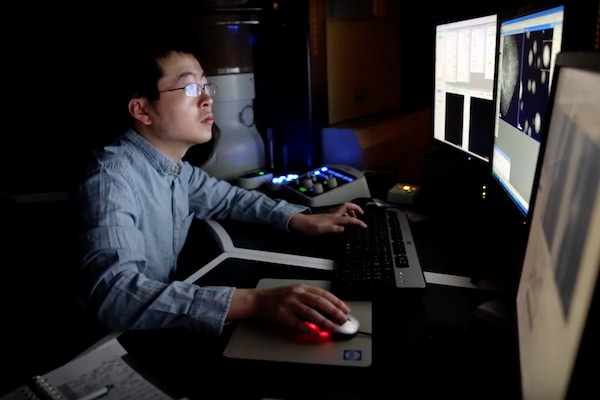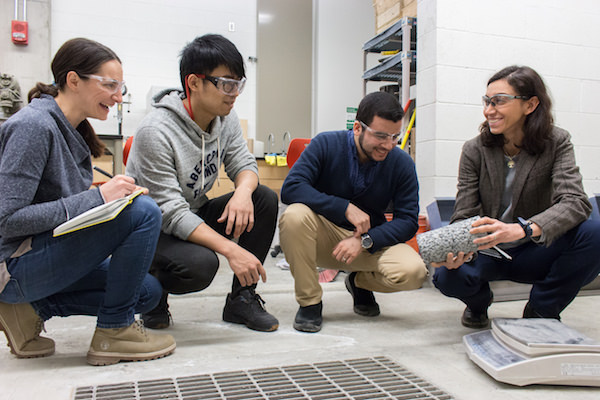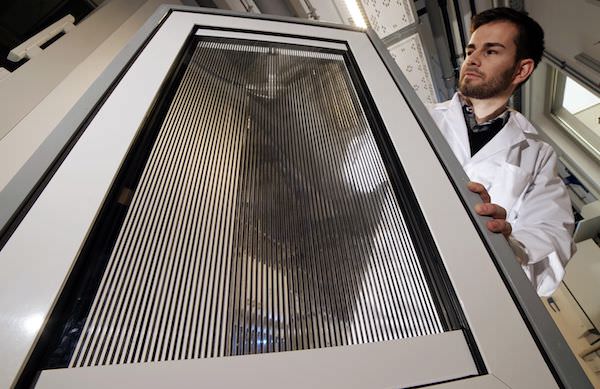Researchers have developed a groundbreaking proof-of-concept battery that interweaves the anode, cathode, and separator in a self-assembling structure. Their work could change the way future batteries are designed for more efficient charging.
Read MoreResearchers have successfully used a 3-D printer to print an electronic circuit on human skin. The technology could help soldiers on the battlefield to detect chemical or biological agents, and the medical field for treating wounds and constructing skin grafts.
Read MoreIn an effort to develop more intelligent data analysis to drive informed nanomaterials design, a unique research initiative at Lehigh University is taking the human element into account in its quest to evolve how we analyze data.
Read MoreResearchers have found a way to reduce dendrite growth in lithium-ion batteries. Creating a 3-D porous substrate out of sugar cubes and silicone, they found that it relieved stress and inhibited dendrite growth.
Read MoreResearchers have developed a type of permeable concrete that solves two problems: flooding from water pooling during heavy rains and recycling of an industrial waste product that previously had no reuse applications.
Read MoreResearchers at Northwestern University have developed a high-efficiency protonic ceramic fuel cell that operates at mid-range temperatures; and researchers at the University of Wisconsin–Madison are harnessing the power of computation to identify better materials for solid oxide fuel cells.
Read MoreMost current energy-saving window technology requires electricity to power the windows. But a research team has devised a fluidic window that uses magnetic nanoparticles to control the window to capture solar energy.
Read MoreDo you find the concept of glass transition a little challenging to comprehend? Glass scientist Edgar Zanotto produced a humorous video, with help from students and colleagues, that visually illustrates the concepts of glass transition, relaxation, and crystallization.
Read MoreAn interdisciplinary group of scientists at the University of Pennsylvania have harnessed intense computation, data, and modeling power to determine how disordered solids fail, an understanding that could help engineer custom materials, such as glass that is less likely to break.
Read MoreFormer NASA engineer and YouTube personality Mark Rober recently posted a new video on his YouTube channel all about carnival games and the science behind winning—or, more accurately, not winning—them.
Read More









